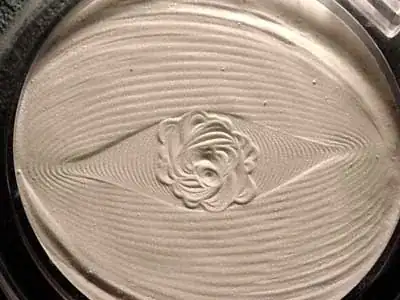This seems to be some new kind of seismogram to me. Looks like I am right. Robbed directly from wiki,
The principle can be shown by an early special purpose seismometer. This consisted of a large stationary pendulum, with a stylus on the bottom. As the earth starts to move, the heavy mass of the pendulum has the inertia to stay still in the non-earth frame of reference. The result is that the stylus scratches a pattern corresponding with the Earth's movement.
So, I'll start in the some sorted order.
The group of curves outside the olive-shaped envelope
I think this is the starting point of the shock. The analogy is something like this: The pendulum is still in motion with the last past earth's frame and it has not synced itself again. So, when it does - the pattern starts to change. During the tremors, the pattern is disturbed a lot. One more thing to notice (your image doesn't show the scale): They have used a very small pendulum (a sand tracing one) for the design (sensitivity maybe) and allowed to move on sand (looks like some muddy colloid so that it shouldn't be affected so much by friction, $\mu$ is very low)
The smooth ellipses were originally formed before the earthquake. How I tell this? We know the pattern for a pendulum. Don't we? It has started from the top of the pattern, curves somewhere near the middle, then the ellipse continues to incline about an angle (which is due to the earth's motion).
The group of curves inside the envelope but outside (2)
As the quake starts to show up, the pendulum notes down every fractional increase of the it's magnitude. And so, the inclination of the ellipses totally curve out (perpendicularly) thereby forming new ellipses at right angles to the previous ones. Now you might ask me a question...
Why are the perpendicular ellipses confined to a small region and do not spread out?
As you can see in the image, each and every fringe in the larger ellipses are equidistant (somewhat) from each other. As the magnitude increases, the fringes begin to compress which could be noticed in the small ellipses. This shows that the quakes weren't too smooth. As the pendulum starts the ellipse, the quake forces it to wiggle in the exactly opposite direction. For this reason,
The group of intertwined curves at the center
This is very very simple than the others. The earthquake has increased to its utmost magnitude. Now, the ground has shaken in every direction which has confused the pendulum to oscillate everywhere. Luckily, it has also made a rose by its random twist & twirl...
